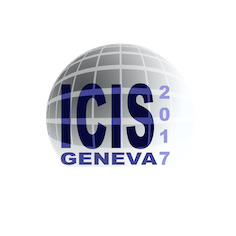Speaker
Description
A dedicated performance optimization of negative hydrogen ion sources applied at particle accelerators is only possible by assessing the processes occurring in the plasma. However, due to the typically very compact source design, diagnostic access is very difficult and often limited to optical emission spectroscopy yielding only line-of-sight integrated results. In order to gain spatially resolved plasma parameters and therefore a detailed insight into the plasma characteristics, the electromagnetic Particle-In-Cell Mote Carlo collision (EM-PIC-MCC) code NINJA has been developed for the Linac4 H$^–$ ion source at CERN. The code considers the RF field generated by the ICP coil and the present external static magnetic fields and calculates self-consistently the resulting discharge properties. A benchmark of the NINJA code has been carried out at the diagnostically well accessible lab experiment CHARLIE for a variation of RF power and gas pressure. This allows for a detailed comparison between simulation and experiment where a good agreement is observed in general although some slight deviations are present. They can be explained by the assumption of strong inductive coupling in the simulation, whereas loose coupling would be more appropriate for the CHARLIE discharges. Nevertheless, the Linac4 ion source plasma is strongly coupled and accordingly, the plasma parameters evaluated from optical emission spectroscopy agree very well with the NINJA simulations. The contribution covers a detailed presentation and discussion of the benchmark investigations at the CHARLIE experiment including spatial distributions of electron temperature and density as well as line-of-sight integrated plasma parameters obtained from optical emission spectroscopy. For the Linac4 ion source, the comparison of measurement and NINJA simulation will be shown for a variation of the RF power. In addition, a first assessment of the discharge properties with respect to negative ion production and destruction rates and hence to the ion source performance will be carried out.
